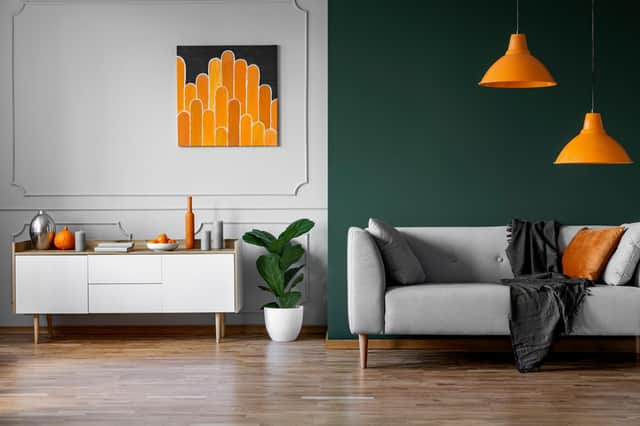House to Home with Rachel Smith: Choosing the right colour for your walls needn't be a daunting task if you follow a few simple rules


One of my key messages is, don’t write off the more expensive paint brands.
The reason why they are more expensive is that they have lots more pigment in them than cheaper paints, which means you get a greater depth of colour.
Advertisement
Hide AdAdvertisement
Hide AdThey also have lower VOCs (volatile organic compounds – toxins emitted by paint, furniture, and fabrics) which means they are better for you and for the environment. They also tend to be thicker, give better coverage, and require fewer coats.


However, one of the most compelling reasons to choose them is for the reduced choice of colours.
Yes, that’s right, less choice is sometimes much better. They are also very good at showing you safe colour palette ideas.
So, that’s all well and good, but how do you choose the right colour?
Advertisement
Hide AdAdvertisement
Hide AdThe direction your room faces will play a part in this. North-facing rooms have a bluer light which means that cool colours will look colder, so they would probably benefit from a warmer colour.
East-facing light changes as the day goes and can wash out colour so it is wise to see at what time of day a room with this orientation will be used. More saturated (stronger/deeper) colours are usually needed.
South-facing rooms can take any colour whatsoever as they get lots of light but I would beware of any colour that’s too warm as the golden light will make it warmer and that can make you feel quite uncomfortable.
West-facing rooms benefit from a more golden light later in the day so a cooler colour would work to balance the light. However if a west-facing room was used in the morning it may need to be a warmer colour.
Advertisement
Hide AdAdvertisement
Hide AdNext you need to think about how you want to feel in a room. Is it a place of relaxation? Concentration? Creativity? Different colours can be used to create the right atmosphere for particular activities.
So, imagine you’ve gone through all that and you’ve narrowed it down to two or three colour choices. Hold that paintbrush right there! Don’t paint loads of tiny splodges next to each other on a wall!!
Go to a diy shop and get some lining paper (you don’t have to buy a roll, they generally have some you can just tear off), or you can use the back of some old wallpaper. Lining paper/wallpaper doesn’t contain any bleach so it won’t affect the colour of the paint.
Paint squares as big as you can (at least 30cm square) and give it two coats.
Advertisement
Hide AdAdvertisement
Hide AdThen blu-tak the samples to each wall - the paint colour will be different on every wall. Then look at them at different times of day (in both daylight and electric light) but specifically at the time of day that you will be using that space.
But here’s the thing: do this one paint sample at a time. Why? Because you’re not comparing the paint colours. You’re looking at each one in the space.
Then all you need to do is decide what colour to do the woodwork…
* For Rachel’s blog and her services visit http://www.clutteristheenemy.co.uk